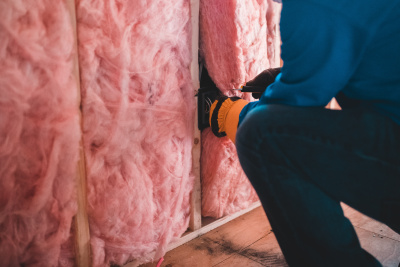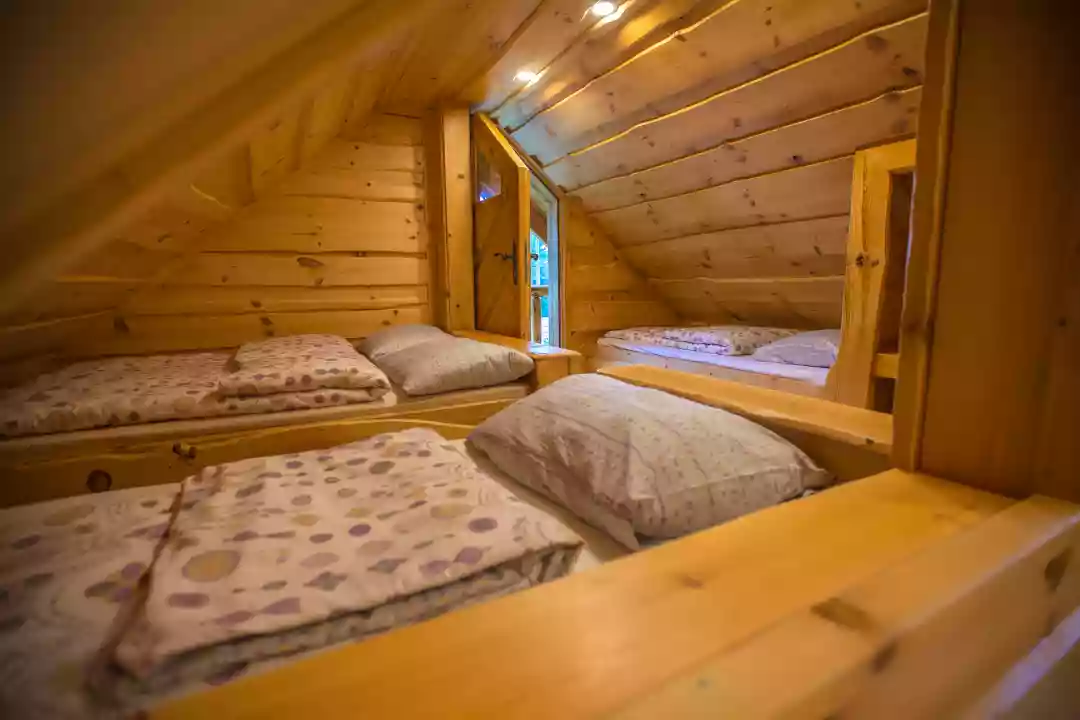Mineral Wool
Mineral wool was historically made using rock, slag, and volcanic ash, but it is now more commonly made from a combination of materials like basalt, slag, and recycled textiles. It is often used in lofts and walls as it is non-combustible and has excellent acoustic and thermal properties. It can be used around pipes and ducts to prevent condensation or in conjunction with other insulation materials to make it even more effective. Mineral wool is an economical option for some insulation projects because it is highly durable and easy to install.
Fibreglass
One of the most common types of insulation is fibreglass, which is made of very fine glass fibres. It is frequently used in a variety of insulation types, including blankets (batts and rolls), loose-fill, rigid boards, and duct insulation. The R-values of the medium- and high-density fibreglass batt insulation materials that manufacturers presently make are marginally higher than those of the regular batts. The denser insulation materials are designed to insulate spaces with little cavity space, like cathedral ceilings.
Fibreglass insulation is created from spun or blasted molten glass fibres. The majority of glass makers use 40% to 60% recycled glass. In open-blow applications (such as loft spaces) or closed-cavity applications (such as those found inside already-existing walls or covered loft floors), loose-fill insulation must be installed using insulation-blowing equipment. Choose the ideal spot for insulation.
The Blow-In-Blanket System (BIBS) is an example of fibreglass loose-fill insulation. Because of the efficient coverage achieved by this kind of application, walls insulated with a BIBS system are substantially better filled than those insulated with other types of fibreglass insulation, such as batts. BIBS is experiencing a dry wind.

Need assistance finding loft insulation near you?
Get a QuotePolystyrene Insulation Materials
Numerous insulation products, including foam board or beadboard, insulation for concrete blocks, and a form of loose-fill insulation comprised of tiny polystyrene beads, are created from the colourless, transparent thermoplastic polystyrene. MEPS may also be found in the form of tiny foam beads, which are often utilised as insulation for foam boards. Although these beads are notoriously challenging to handle, they may be used as pouring insulation for hollow wall cavities, such as those in concrete blocks.
Other polystyrene insulating materials that are similar to MEPS include extruded polystyrene (XPS) and expanded polystyrene (EPS). Both products are comprised of polystyrene, however, while XPS is produced by forcing molten material out of a mould and moulding it into sheets, EPS is created by gluing together microscopic plastic beads. The most frequent application of XPS for foam boards is insulation. Most often, EPS is produced in blocks that can be easily cut into board insulation. In insulating concrete forms (ICFs) and structural insulating panels (SIPs), EPS and XPS are both often used as insulation. The R-value of XPS insulation may gradually drop over time as air gradually replaces some of the low-conductivity gas that has leaked out.
Polyisocyanurate Insulation Materials
The closed-cell foam polyisocyanurate is made of thermosetting plastic and has a low-conductivity gas within each of its cells. There are three different forms of polyisocyanurate insulation: liquid, sprayed foam, and rigid foam board. Additionally, it can be used to create laminated insulation panels with a selection of facings. Since liquid foam conforms to all surfaces, foamed-in-place applications of polyisocyanurate insulation are typically less expensive than installing foam boards and can perform better.
As part of the low-conductivity gas escapes and is replaced by air over time, the R-value of polyisocyanurate insulation may decrease; this phenomenon is referred to as thermal drift or ageing. According to experimental data, the majority of thermal drift happens in the first two years following the production of the insulation material. On rigid polyisocyanurate foam panels, foil and plastic facings can help delay ageing. Radiant barriers can also be created using reflective foil if it is installed properly and is facing an open area. This can increase the overall thermal resistance by an additional R-2, depending on the size and orientation of the air space.
Cellulose Insulation Material
Cellulose insulation is created from recycled paper materials, mostly newsprint, and has a high recycled material content, often ranging from 82% to 85%. The paper is fiberized after it has been broken down into tiny fragments to generate a material that fits snugly inside building cavities. To ensure fire and insect resistance, manufacturers use the mineral borate, which is occasionally combined with the less expensive ammonium sulphate. When utilised at the right densities, cellulose insulation cannot settle in a building cavity.
Cellulose insulation is used in both new and old homes as loose-fill in open loft installations and firmly packed in architectural cavities like walls and cathedral ceilings. Installers remove a strip of exterior siding, usually waist height, from an existing structure. Following the drilling of a row of three-inch holes into each stud bay in the wall sheathing, the insulation is blown into the building cavity, typically at a density of 1.5 to 3.5 lb per cubic foot, using a special filler tube inserted into the top of the wall cavity. After installation, the siding is changed, the holes are covered with plugs, and the siding is, if necessary, touched up to match the wall.
Cellulose can be dry-installed under netting or damp-sprayed during new construction. A tiny amount of moisture is supplied to the spray nozzle tip when it is damp sprayed, activating the product's natural starches and causing them to attach inside the cavity. Within 24 hours of installation, damp-sprayed cellulose is normally ready for wall covering. Another option is to blast dry cellulose into netting that is stapled over building cavities.
In summary, a range of materials can be utilised for insulation. Your home can be insulated using cellulose, fibreglass, polyisocyanurate, polystyrene, mineral wool, and polystyrene. Your choice of material should take into account your spending limit, the space being insulated, and the level of insulation you want.
In this article:
